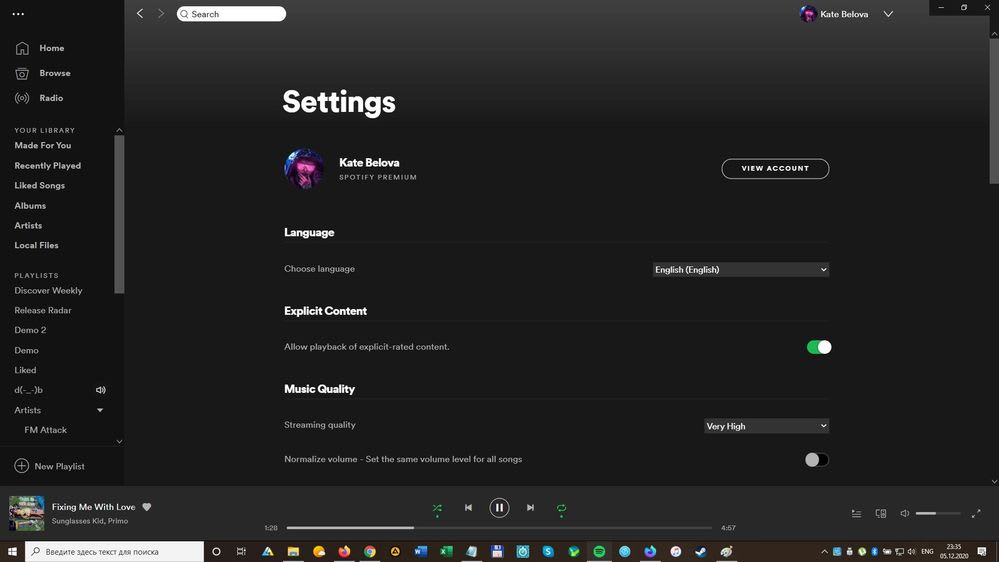What Language Should You Show Your Users? A Comprehensive Guide to Language Selection Across Platforms
From websites to mobile apps and desktop tools—here’s how to deliver the right language experience, every time.
Language is more than a UX detail—it’s foundational to user trust and engagement. The wrong language can confuse, frustrate, or even alienate your users.
The right one? It builds confidence and delight from the very first click.
Whether you're building a global e-commerce store, a SaaS dashboard, or a personal finance app, your approach to language detection and selection matters.
🖥️ Websites: Ask First, Not Last
Use Case:
You serve different content, pricing, or legal info by country (e.g., marketplaces, streaming services, SaaS platforms).
🔍 Best Practice:
Prompt for Location & Language on First Visit
How:
Detect the
Accept-Languageheader + geolocate via IP.Present a pop-up with two dropdowns: Region and Preferred Language.
Store the choice via cookies or local storage.
Always allow users to override suggestions.
🔧 Real-world inspiration:
🌐 IKEA – Shows a region/language selection screen before entering the site.
🛒 Zalando – Detects region/language, lets users switch easily.
💼 Atlassian – Provides a visible language switcher and URL-based locale options.
Important:
Place a persistent language switcher in your header or footer.
📱 Mobile Apps: Respect the Device, Offer Choice
Use Case:
Your app needs to work globally and be immediately usable.
🔍 Best Practice:
Use the device’s locale at install, with an in-app override.
How:
Read the OS-level locale (iOS:
NSLocale, Android:Locale.getDefault()).Default to it, but always include a language selector in your app settings.
Save the selection locally (e.g., SharedPreferences / UserDefaults).
🔧 Real-world inspiration:
📱 Duolingo – Matches OS language, but also lets users choose their learning language within the app.
📺 Netflix Mobile App – Uses device language for UI, offers extensive subtitle/audio options per profile.
📖 Khan Academy – Localizes both content and UI, while allowing easy switching.
Why this works:
Many users are multilingual.
Devices may be shared or used in non-native regions.
🌐 Web Apps: Profiles Make Perfect
Use Case:
You operate a platform that requires user logins (SaaS, dashboards, portals).
🔍 Best Practice:
Detect on first login, store in profile, respect on all sessions.
How:
On signup, detect
navigator.language.Let users select a preferred language in their profile settings.
Store it in your backend and sync it across devices.
🔧 Real-world inspiration:
👨💻 GitHub – Detects browser language but allows profile-specific settings.
📊 Notion – Defaults to browser language, offers persistent settings in user profile.
📁 Dropbox – Lets users pick language in settings, independent of device/browser.
Pro Tip:
Allow language override links like ?lang=fr for easy support and sharing.
🧑💻 Desktop Software: Ask on Launch, Then Remember
Use Case:
You provide downloadable software (e.g., productivity tools, creative apps).
🔍 Best Practice:
Read system locale, confirm or customize on first launch.
How:
Check the OS locale (Windows:
GetUserDefaultUILanguage, macOS:NSLocale.currentLocale).On first launch or during install, prompt for confirmation.
Save preference in a local config file or registry entry.
🔧 Real-world inspiration:
🎵 Spotify Desktop – Matches system locale but lets users choose via settings.
📦 Adobe Creative Cloud – Asks for language on install; user can change it in preferences.
🖥️ VS Code – Prompts for language pack if not matching system locale.
Extra Consideration:
Ensure installers, error messages, and onboarding experiences follow the chosen language too.
🚫 What to Avoid
❌ IP-only Detection
Location ≠ Language. An expat in Tokyo might prefer English, not Japanese.
❌ Hidden Language Settings
Always make language settings visible and easily accessible.
❌ Assuming Browser/Device Language Is Final
Use it as a starting point, not the destination.
❌ Forcing App Restart to Change Language
Apply language changes dynamically where possible, or warn users clearly if a restart is needed.
✅ Checklist: Smart Language Strategy by Platform
💬 Final Thoughts
Your users are global—but their preferences are personal. Choosing the right language shouldn’t be guesswork.
✅ Default smart.
✅ Always ask when it matters.
✅ Empower users to control their experience.
Build products that speak your users’ language—literally and culturally.
If you're building international products and want weekly tips on localization, UX, and multilingual strategy, subscribe to the newsletter. Real-world insights from the field—no fluff, just fluent UX.





